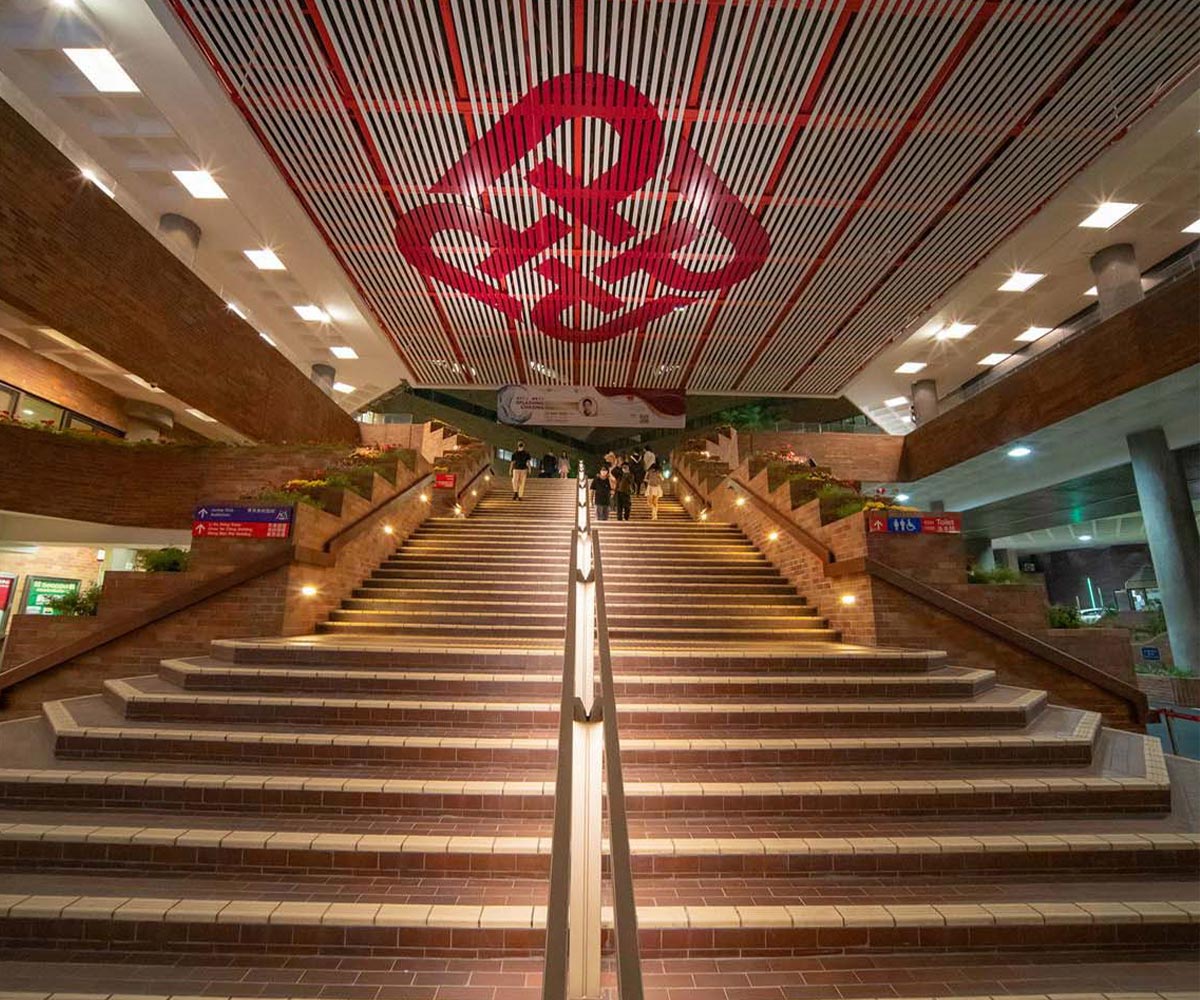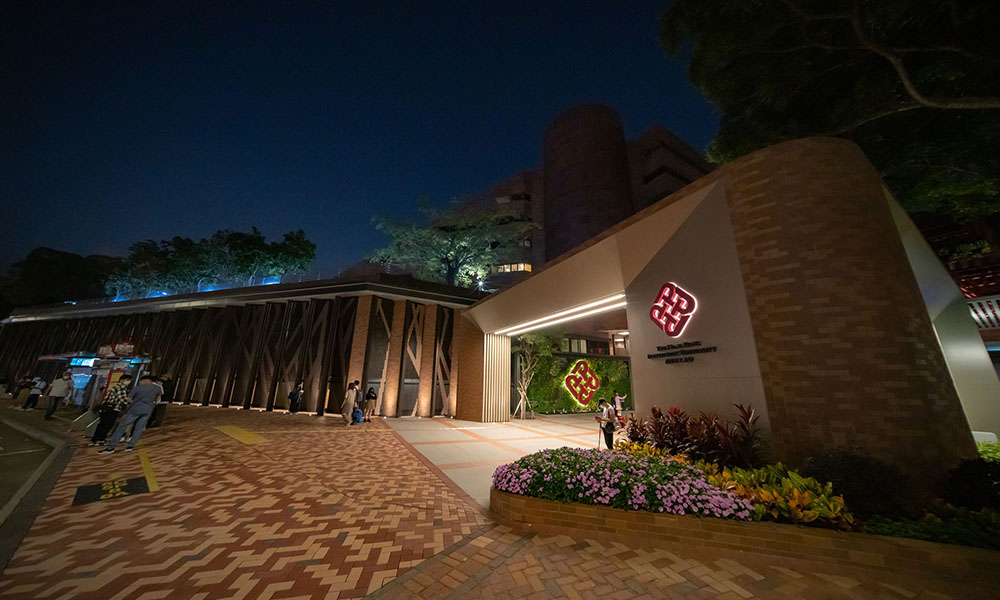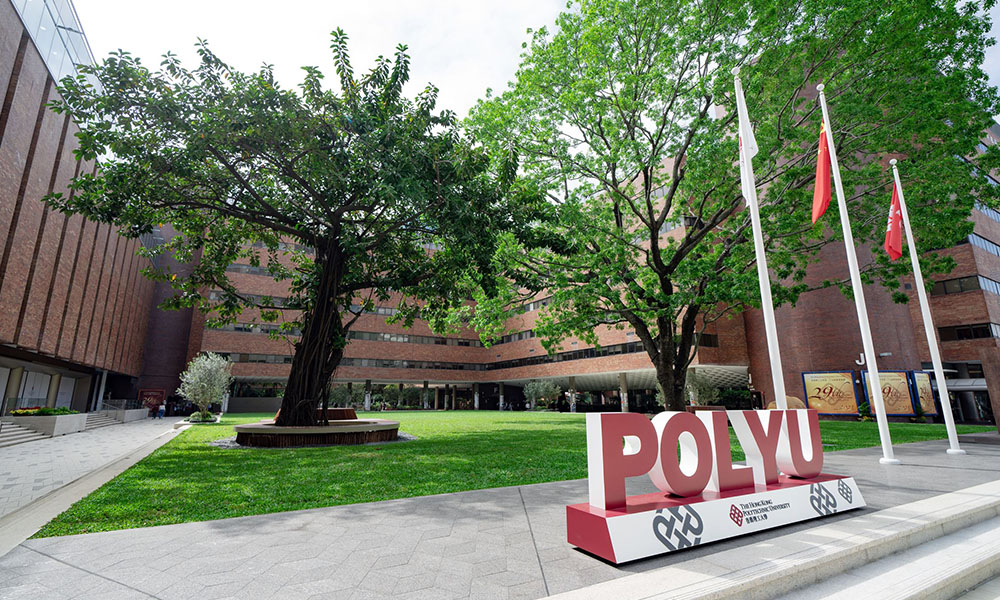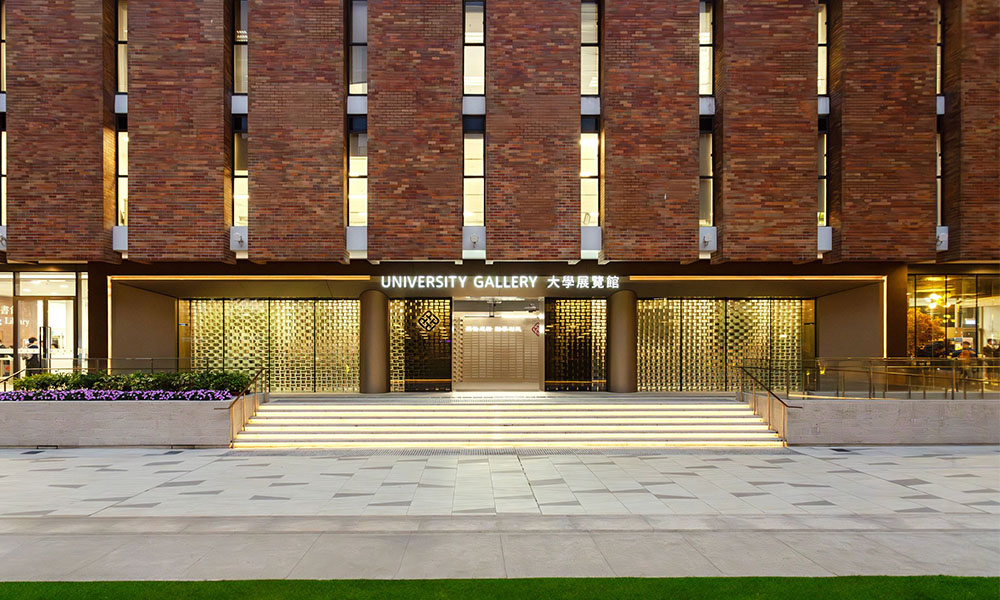How to go to PolyU Hung Hom Bay Campus?
Address: 8 Hung Lok Road, Hung Hom, Kowloon, Hong Kong
It takes only 10 minutes to walk from Exit B1 of MTR Hung Hom Station or Exit B of MTR Hung Hom Station to the PolyU Hung Hom Bay Campus.

Main School Gate
School Motto
Developing things, accomplishing tasks, encouraging learning and benefiting the people
"Opening things and accomplishing affairs" comes from the Book of Changes, Xici Shang: "The Book of Changes opens things and accomplishes affairs, and it is the way to conquer the world. This is all." Kong Yingda's commentary: "This means that the Book of Changes can open up the aspirations of all things, accomplish the affairs of the world, and have the way to conquer the world. This is it. The essence and function of the Book of Changes are nothing more than this." This means that the function of the Book of Changes is to enable people to understand the principles of all things and act based on this knowledge to accomplish things well.
"Encourage learning and benefit the people" is taken from Wang Chong's Lunheng in the Han Dynasty: "Things that can be known, if you think deeply about them, will not be difficult even if they are great; things that cannot be known, if you study diligently, will not be easy even if they are small. Therefore, a man of wisdom and intelligence cannot achieve anything without learning, and cannot know anything without asking." And in the Book of the Later Zhou Dynasty: "What a king should admire is virtue, and virtue lies in benefiting the people."
The Hong Kong Polytechnic University (PolyU) boasts a rich history spanning over 85 years and is closely tied to the social and economic development of Hong Kong. It has actively responded to the needs of the times and made significant contributions to the progress of Hong Kong, the nation, and the world. Adhering to the spirit of its motto, "Enlightenment, Pursuit of Learning, and Benefiting the People," PolyU aspires to be an innovative world-class university, pursuing excellence in talent development, scientific research, and knowledge transfer. It is dedicated to nurturing professionals and social leaders who possess a sense of patriotism, a global perspective, and a courageous commitment to social responsibility. At the same time, it is committed to world-leading research and innovation to contribute to society. PolyU's pursuit of excellence, innovation, and outstanding achievements have earned it widespread international recognition, and it remains among the world's top 100 universities, fully demonstrating its global leadership in higher education and cutting-edge scientific research.
PolyU Today
Although PolyU has a long history of eighty years, we have always kept pace with the times and strived to address real-life problems for the benefit of Hong Kong, the country and the world.
Hong Kong Polytechnic University (November 25, 1994)---
The College was granted self-accreditation status by the University and Polytechnic Grants Committee, officially obtaining university status and being renamed the Hong Kong Polytechnic University.
Hong Kong Polytechnic (1972)---
The Hong Kong Polytechnic was formally established with the mission of offering professional courses to meet society's demand for professional talent.
Hong Kong Technical College (1947)---
After World War II, it was renamed the Hong Kong Technical College . In 1957, the Hung Hom campus was completed, marking a new chapter in the history of industrial education in Hong Kong.
Hong Kong Government Advanced Technical College (1937)---
The Hong Kong Technical College of Advanced Technology was established. Located on Wood Road in Wan Chai, it was the earliest predecessor of the University and the first government-funded institution in Hong Kong to provide post-secondary engineering education.
The above information are from:
https://www.polyu.edu.hk/tc/about-polyu/history/
https://www.polyu.edu.hk/tc/about-polyu/



